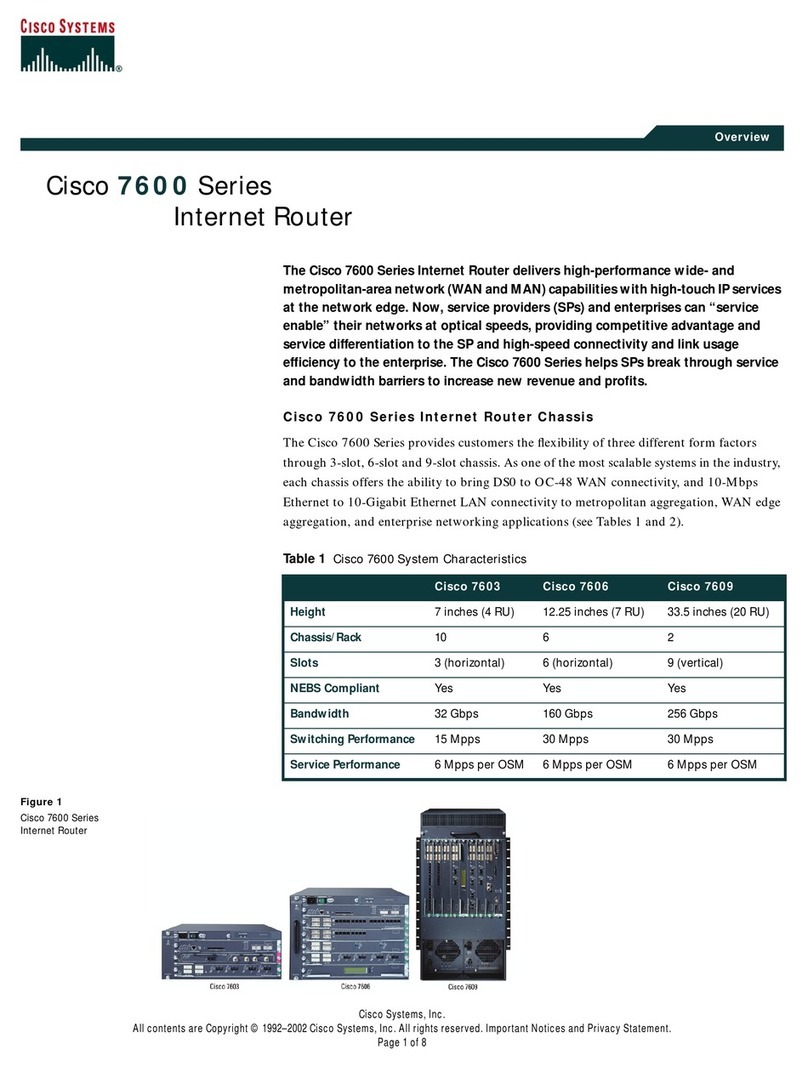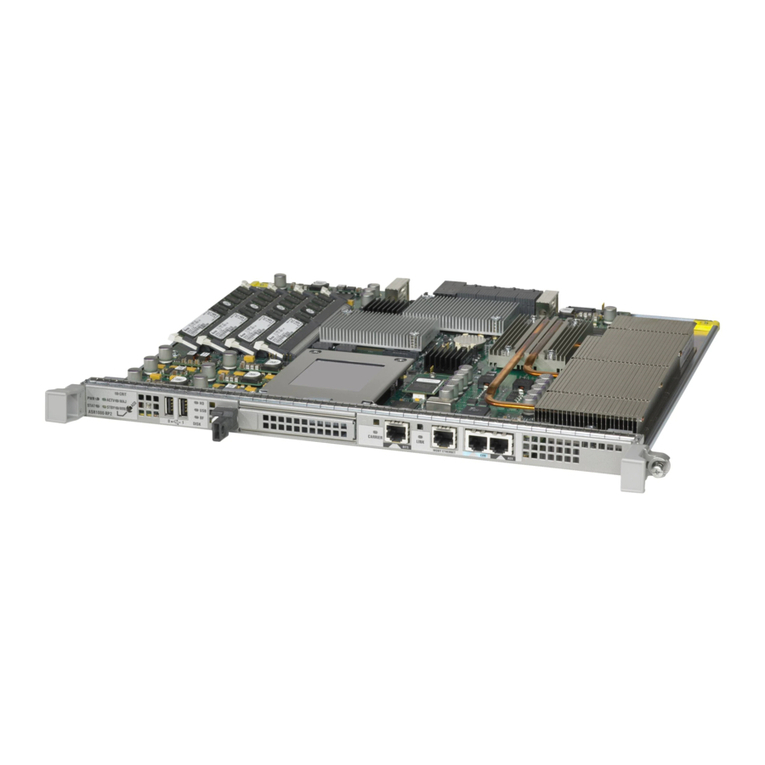Cisco Linksys RVL200 User manual
Other Cisco Network Router manuals
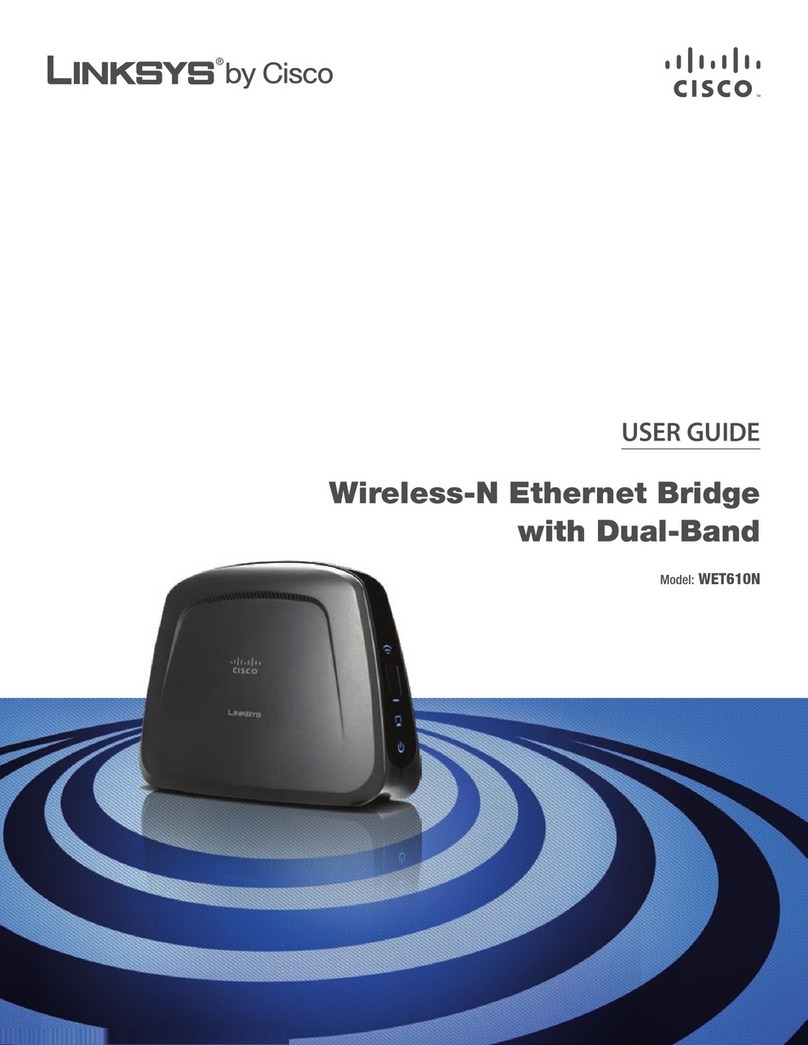
Cisco
Cisco Linksys WET610N User manual
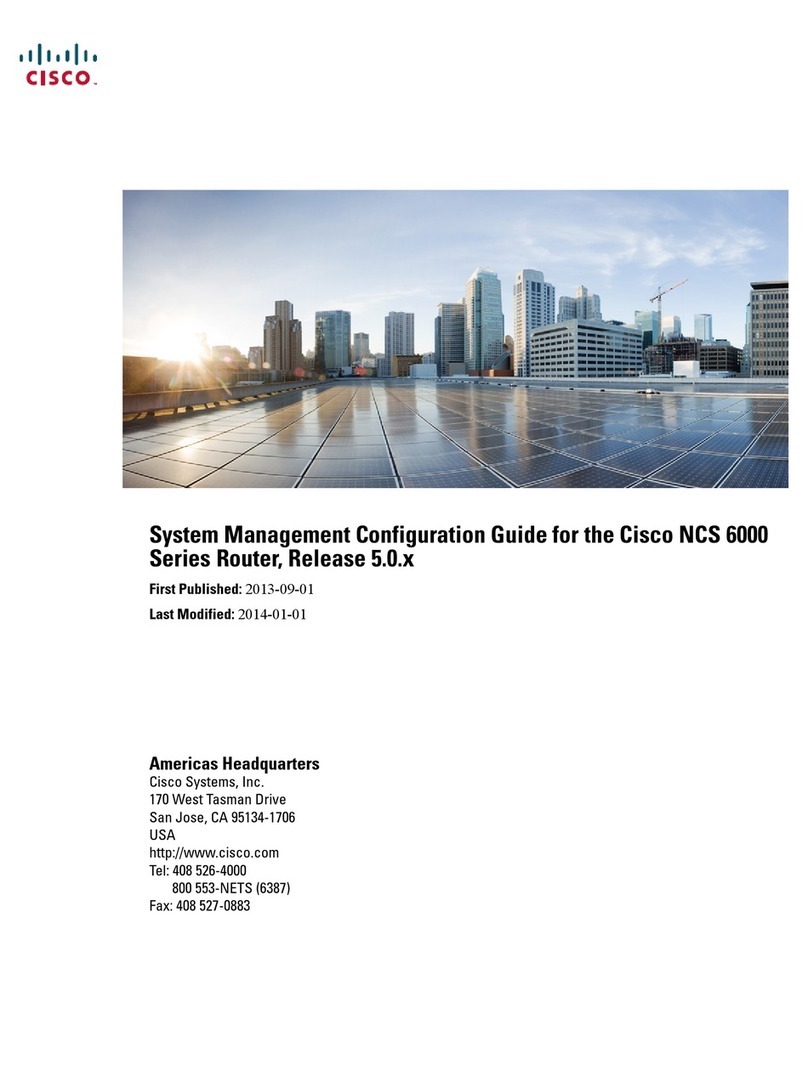
Cisco
Cisco NCS 6000 Series User manual
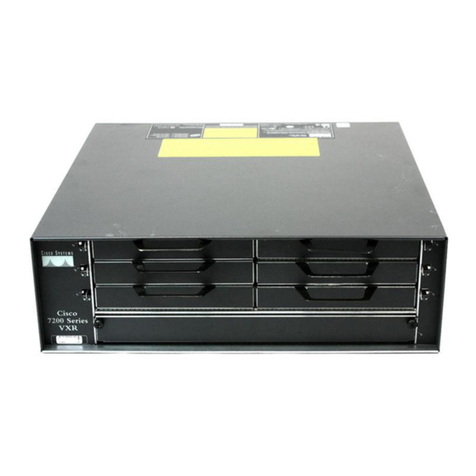
Cisco
Cisco 7206 - VXR Router User manual

Cisco
Cisco ASR1002 - ASR 1002 Router User manual

Cisco
Cisco 4948 Series User manual
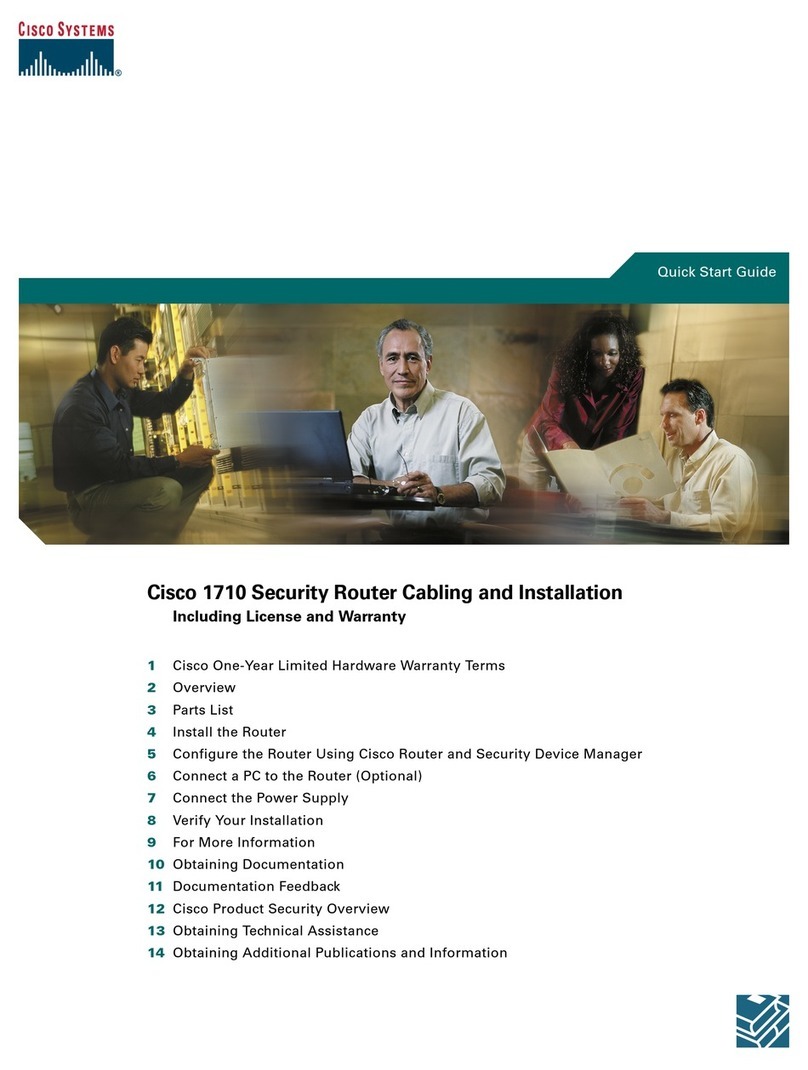
Cisco
Cisco 1710 User manual
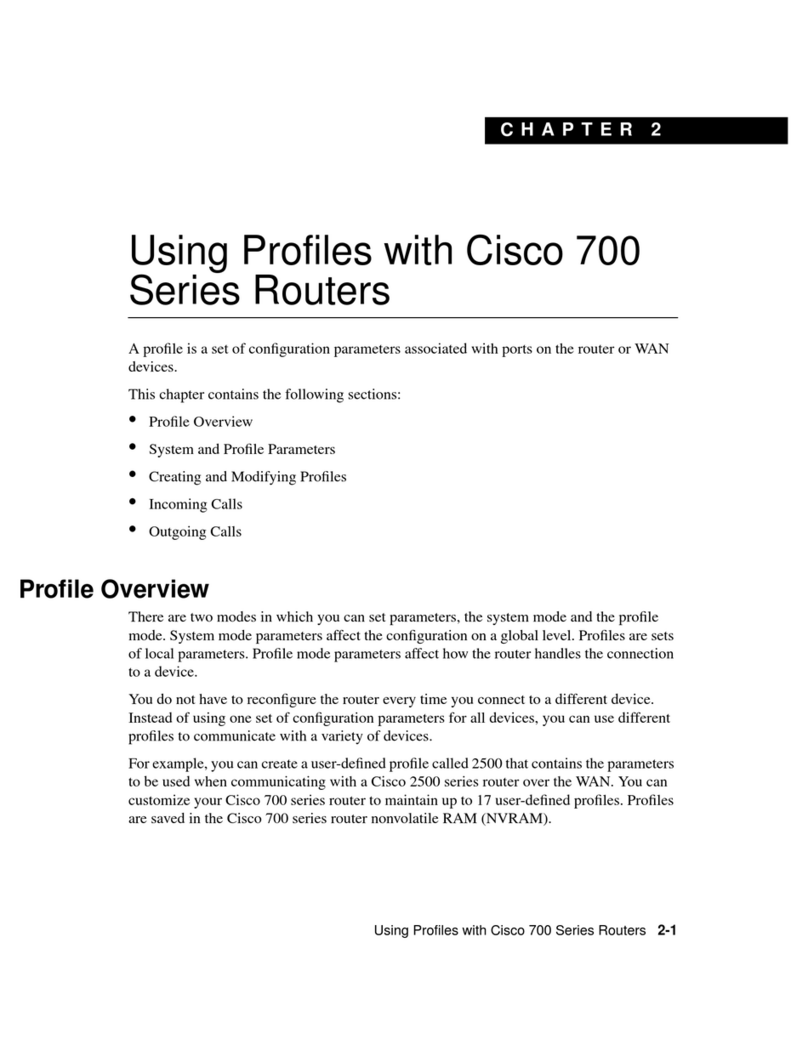
Cisco
Cisco 700 series User manual

Cisco
Cisco 3800 Series User manual
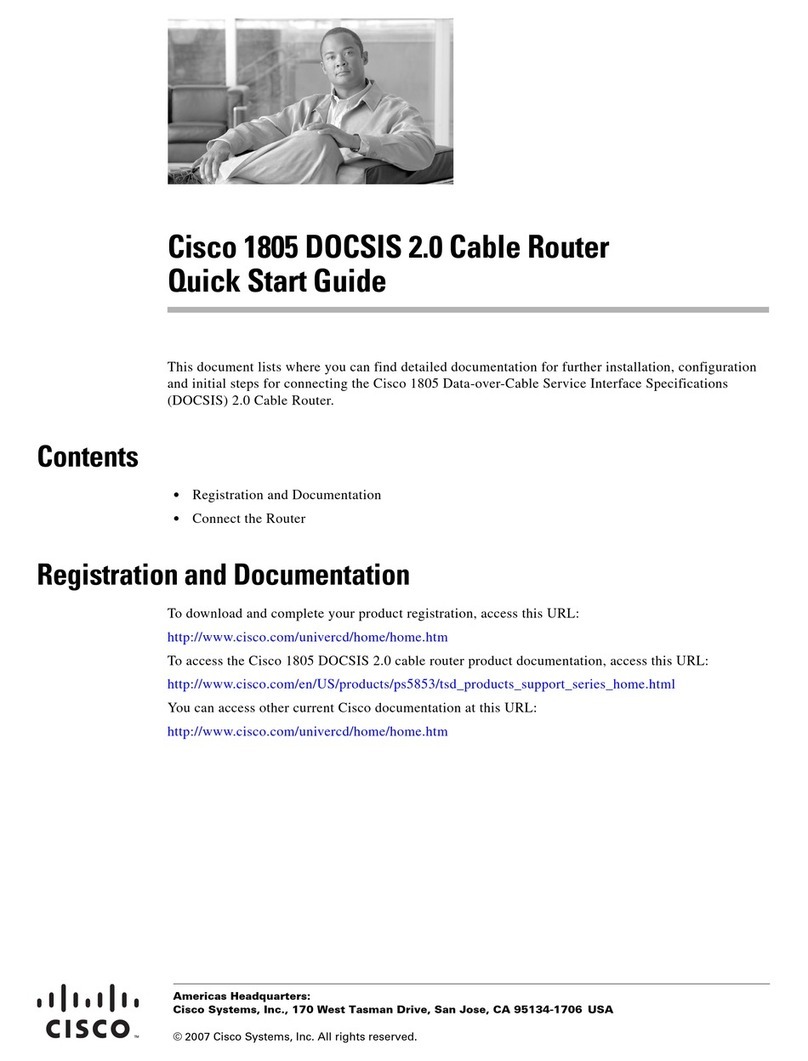
Cisco
Cisco 1805 User manual
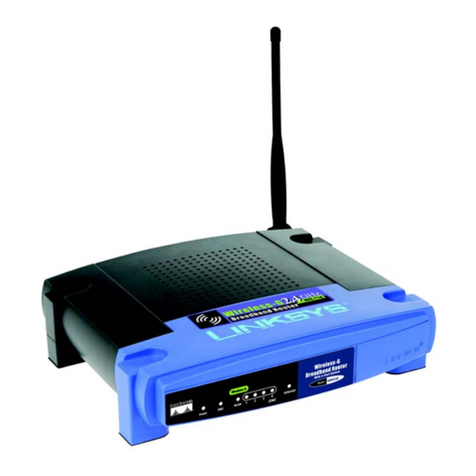
Cisco
Cisco Linksys WRK54G User manual
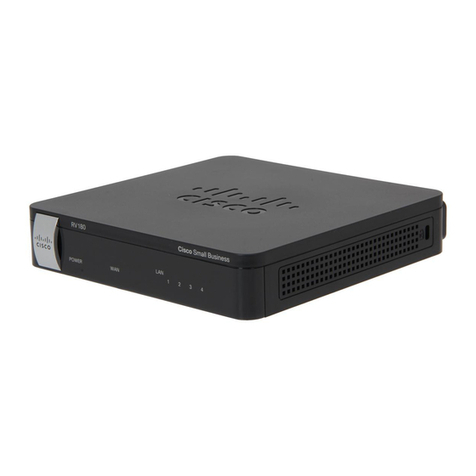
Cisco
Cisco RV180 Use and care manual
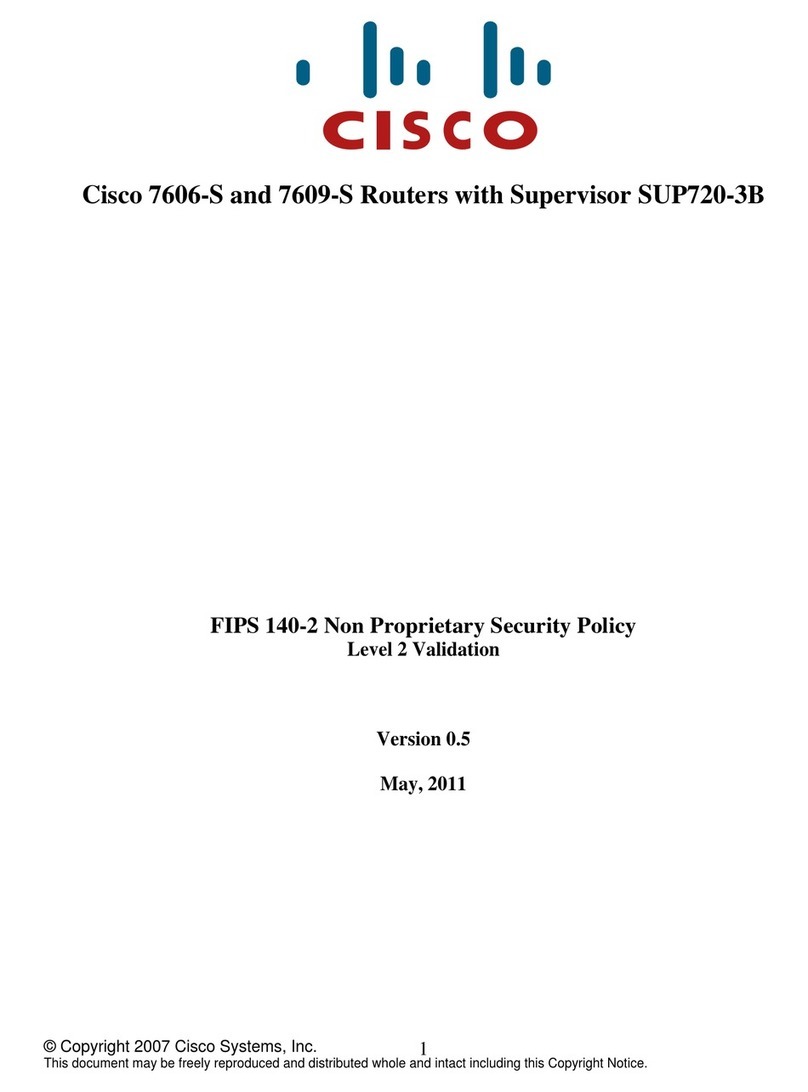
Cisco
Cisco 7609-S User manual
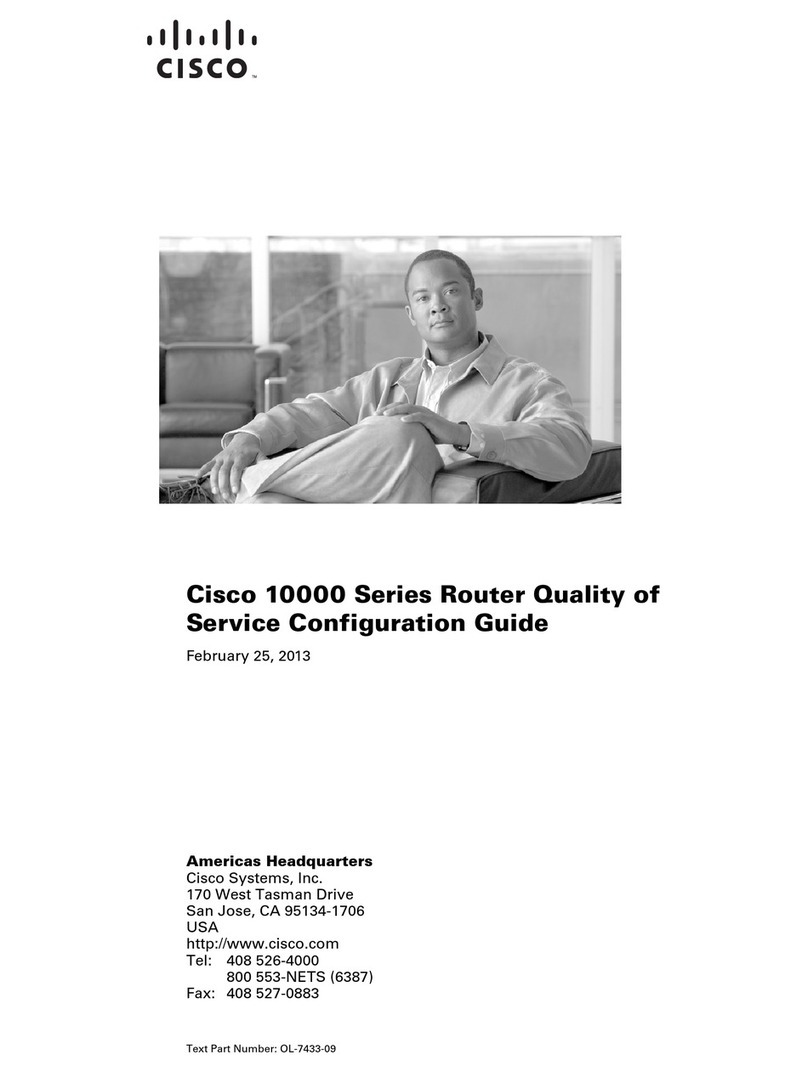
Cisco
Cisco 10000 Series User manual
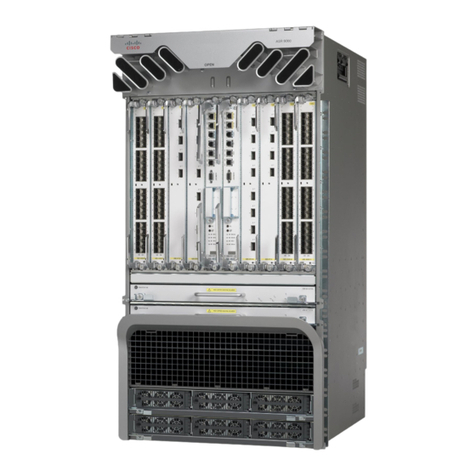
Cisco
Cisco ASR 9912 User manual
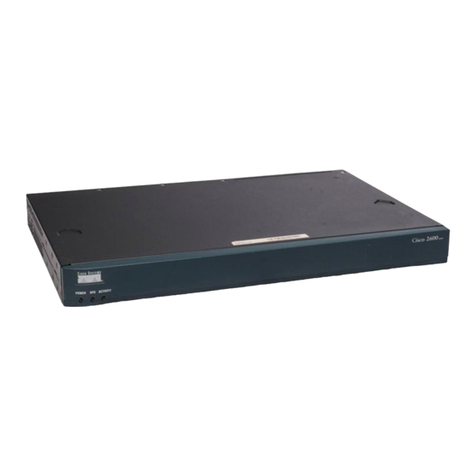
Cisco
Cisco 2612 Manual
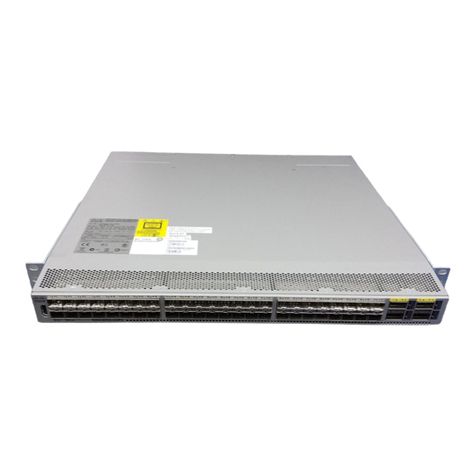
Cisco
Cisco 6000 series User manual

Cisco
Cisco N5010P-N2K-BE User manual
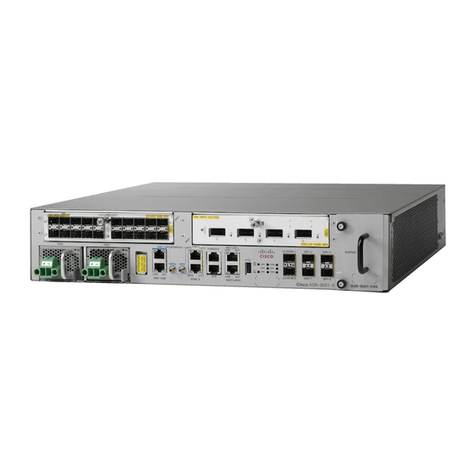
Cisco
Cisco ASR 9901 Manual
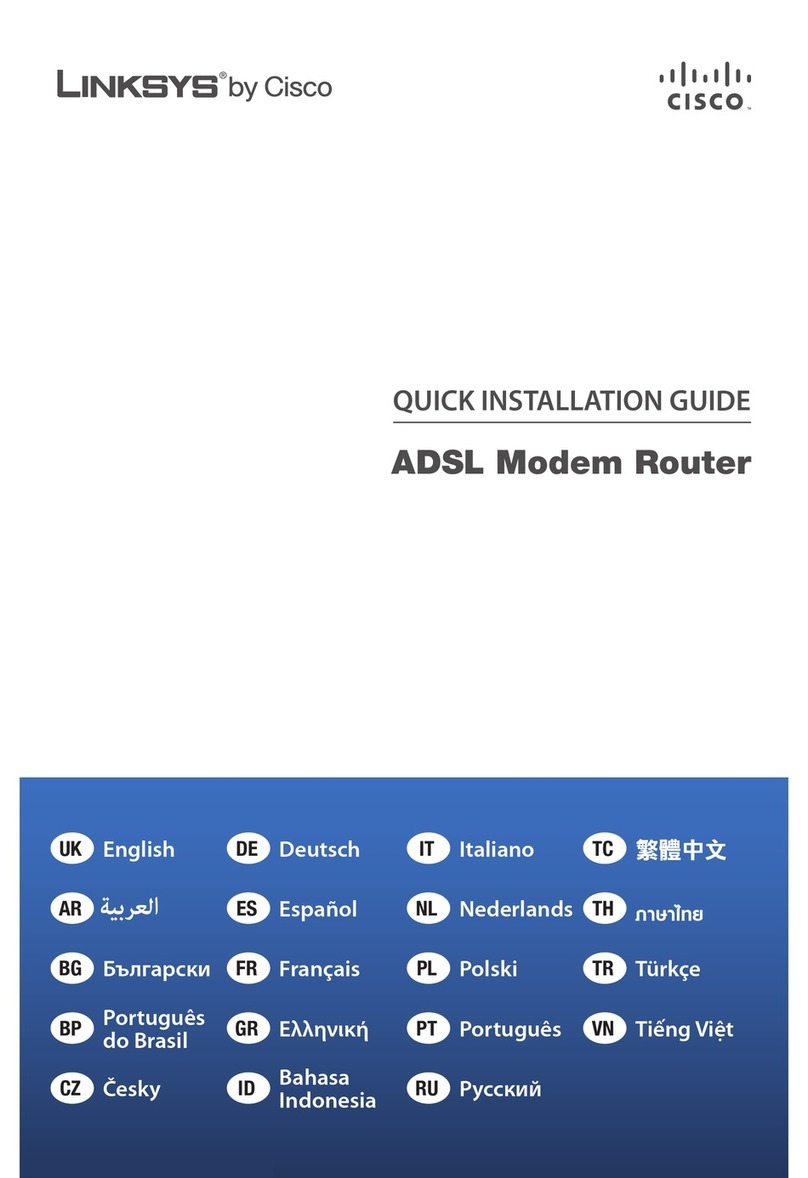
Cisco
Cisco ADSL Modem Router User manual
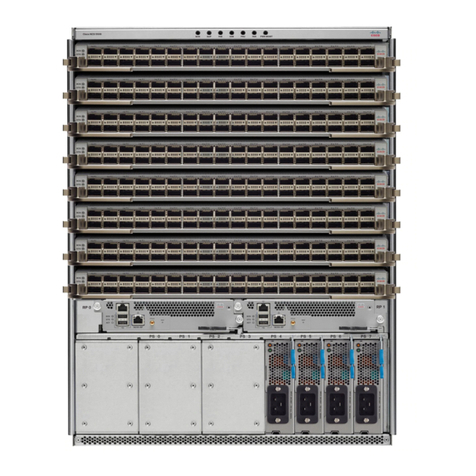
Cisco
Cisco NCS 5500 Series Manual
Popular Network Router manuals by other brands

TRENDnet
TRENDnet TEW-435BRM - 54MBPS 802.11G Adsl Firewall M Quick installation guide

Siemens
Siemens SIMOTICS CONNECT 400 manual

Alfa Network
Alfa Network ADS-R02 Specifications

Barracuda Networks
Barracuda Networks Link Balancer quick start guide

ZyXEL Communications
ZyXEL Communications ES-2024PWR Support notes

HPE
HPE FlexNetwork 5510 HI Series Openflow configuration guide


